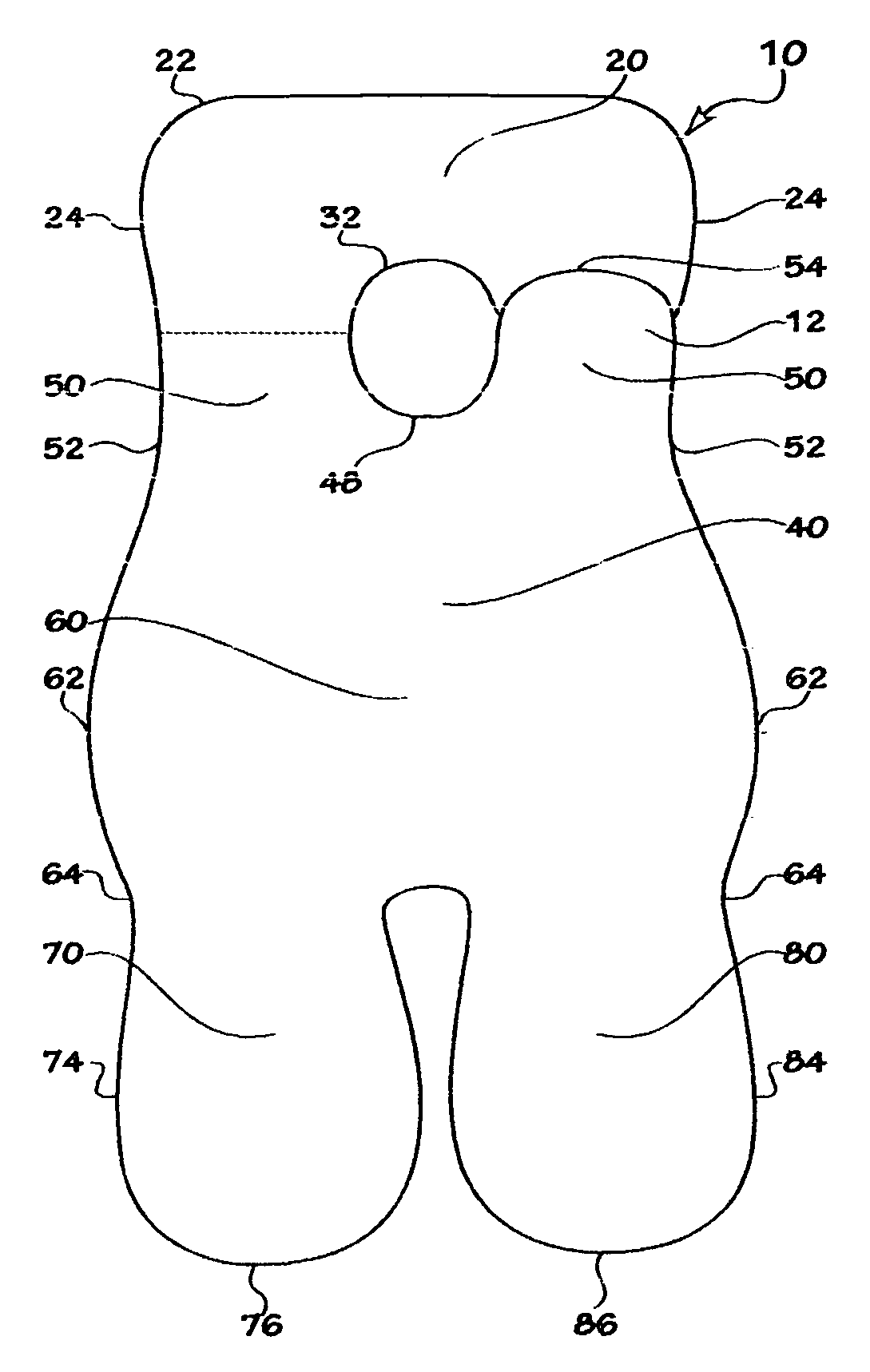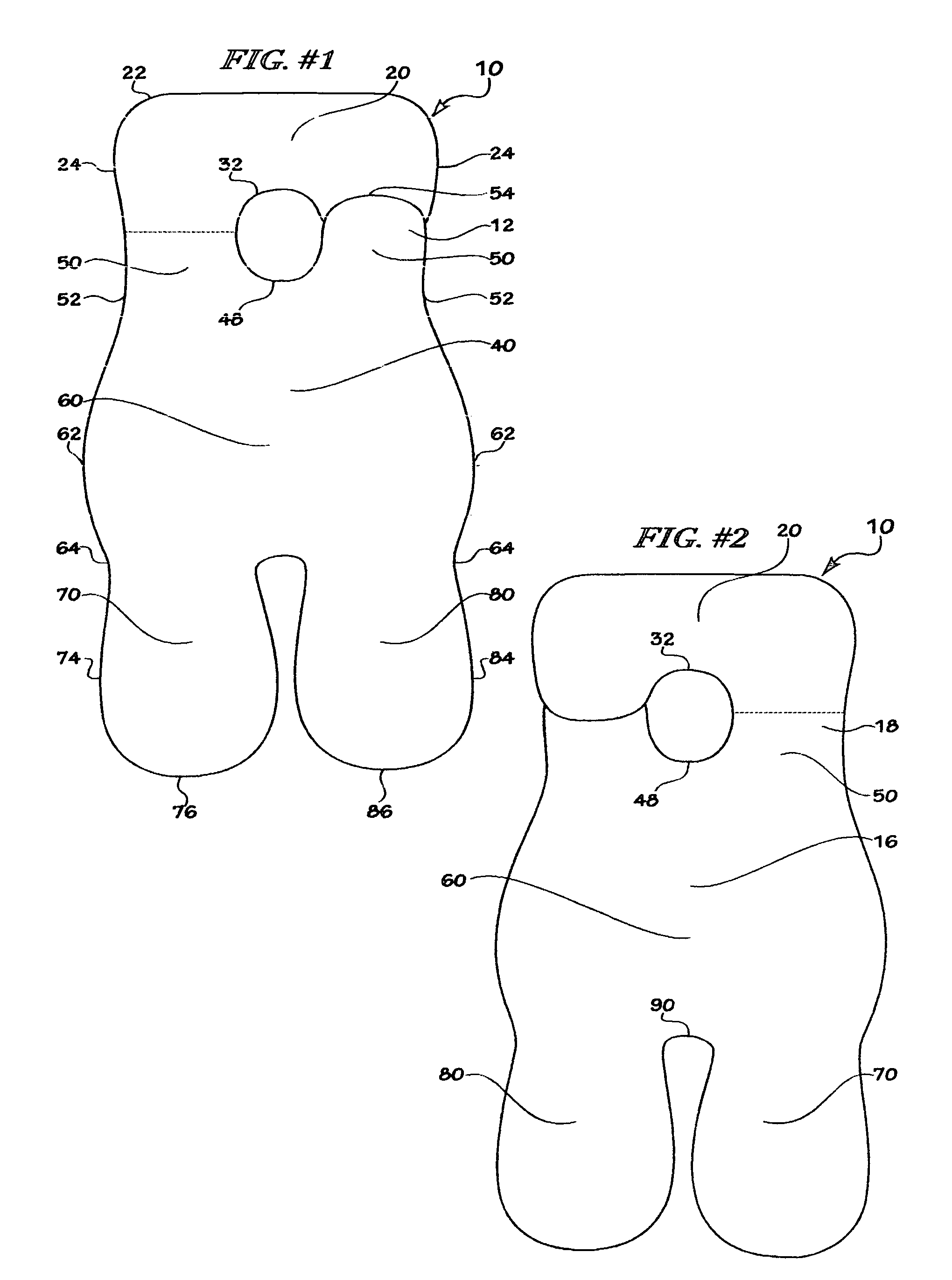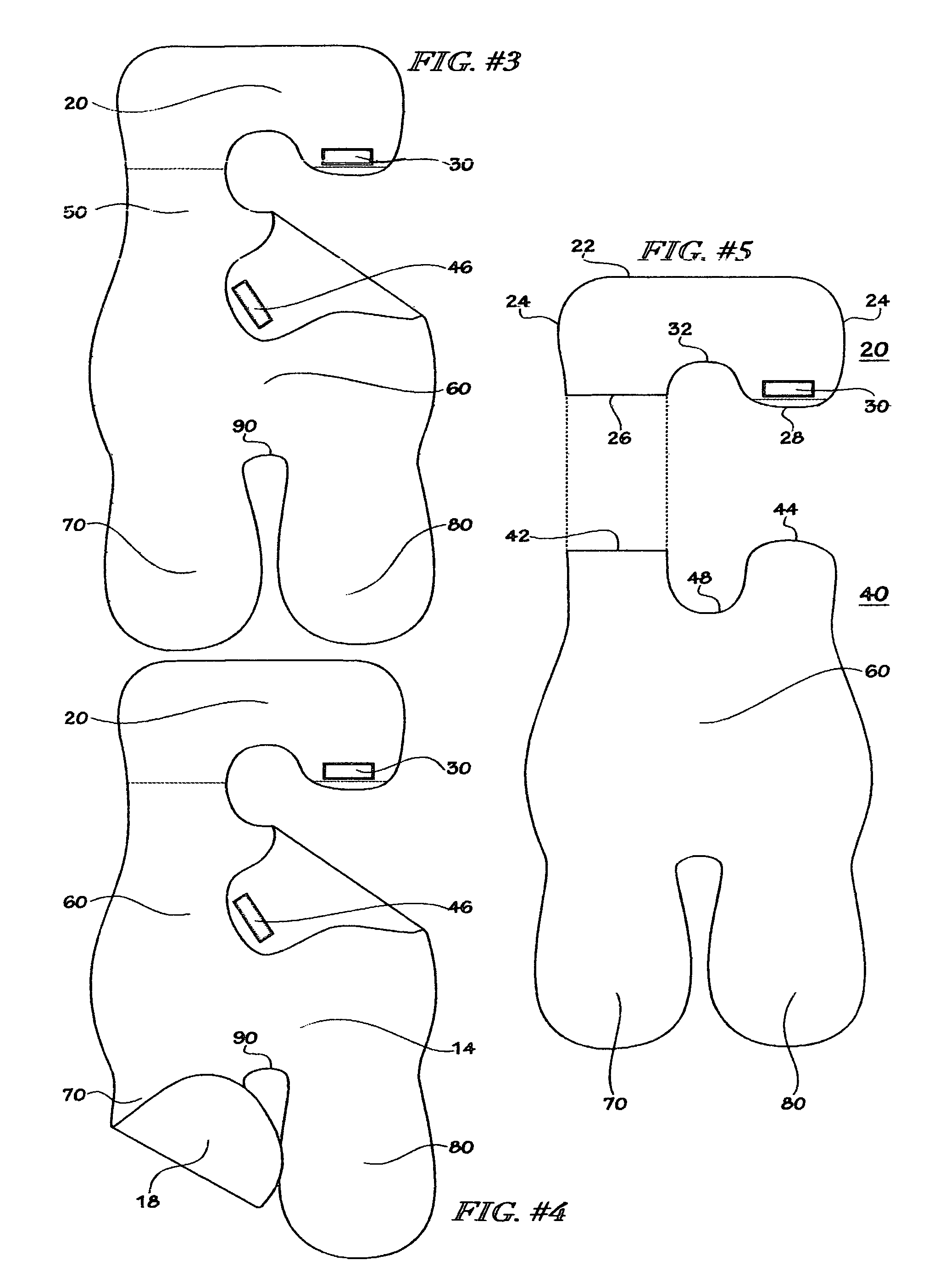Child protective garment
- Summary
- Abstract
- Description
- Claims
- Application Information
AI Technical Summary
Benefits of technology
Problems solved by technology
Method used
Image
Examples
Embodiment Construction
[0048]In the following description of the invention, reference is made to the accompanying drawings, which form a part thereof, and in which are shown, by way of illustration, exemplary embodiments illustrating the principles of the present invention and how it may be practiced. It is to be understood that other embodiments may be utilized to practice the present invention, and structural and functional changes may be made thereto without departing from the scope of the present invention.
[0049]The preferred embodiment of a garment according to the present invention is illustrated in FIGS. 1–5 and is generally referred to by the reference numeral 10. The garment is preferably constructed of a washable fabric 12 in front 14 sewn to a waterproof or water repellent liner 18 on the rear 16. Garment 10 includes back flap 20 and lower piece 40, which are shown as separated in FIG. 5. Back flap 20 provides counterbalance weight to the rest of garment 10, which covers much of the front porti...
PUM
 Login to View More
Login to View More Abstract
Description
Claims
Application Information
 Login to View More
Login to View More - R&D
- Intellectual Property
- Life Sciences
- Materials
- Tech Scout
- Unparalleled Data Quality
- Higher Quality Content
- 60% Fewer Hallucinations
Browse by: Latest US Patents, China's latest patents, Technical Efficacy Thesaurus, Application Domain, Technology Topic, Popular Technical Reports.
© 2025 PatSnap. All rights reserved.Legal|Privacy policy|Modern Slavery Act Transparency Statement|Sitemap|About US| Contact US: help@patsnap.com



